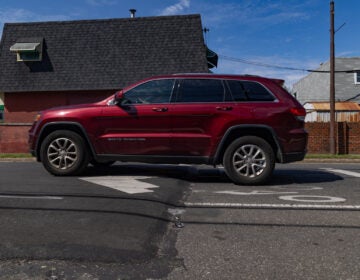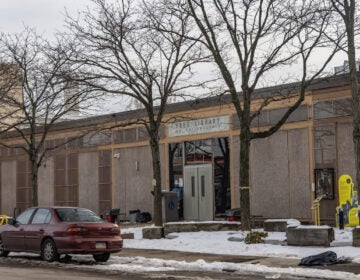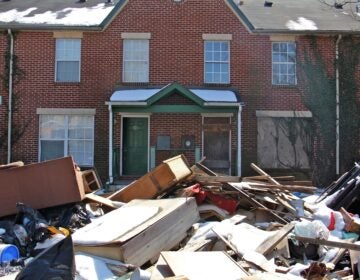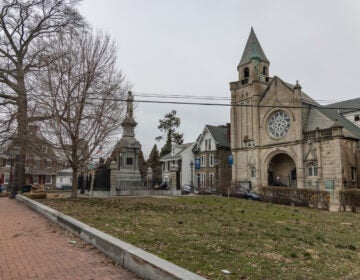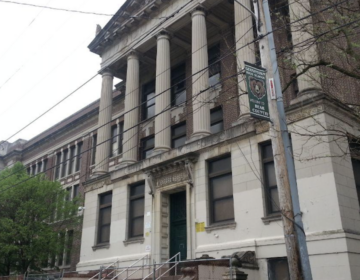‘A no-brainer’: Philly’s historical commission designates new district in Germantown
The Germantown Urban Village Historic District is now part of the Philadelphia Register of Historic Places.
Listen 0:53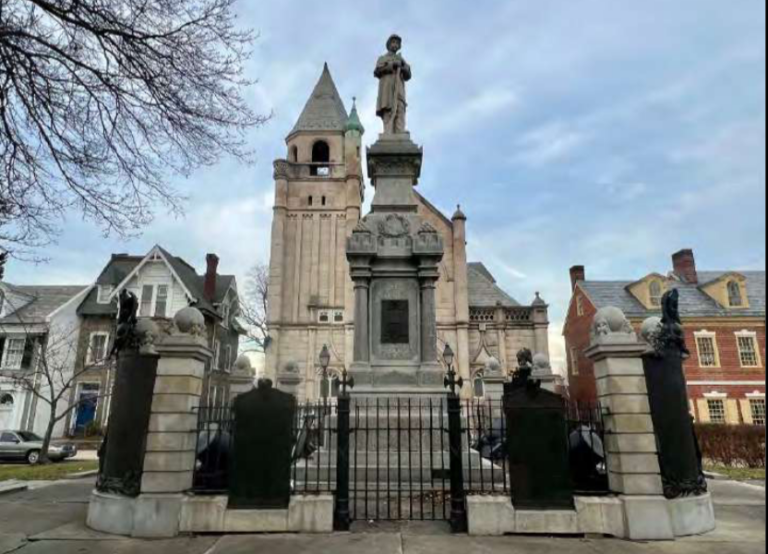
Looking Northeast, the Soldiers’ Monument in Market Square. (Oscar Beisert, 2023)
Have a question about Philly’s neighborhoods or the systems that shape them? PlanPhilly reporters want to hear from you! Ask us a question or send us a story idea you think we should cover.
Nearly 60 years ago, the National Park Service designated a district of Colonial-era buildings in Germantown a National Historic Landmark, the highest distinction a group of properties can receive from the federal government.
But the accolade doesn’t come with any local safeguards, meaning some of the buildings within the district, centered along Germantown Avenue, had never been protected against demolition.
Until now.
A group of properties on the avenue will now be preserved thanks to a newly minted historic district that partially overlaps with the one NPS established in the 1960s. Unanimously approved by the Philadelphia Historical Commission last week, the Germantown Urban Village Historic District also includes dozens of buildings and vacant lots located on dense cross streets, including Church Lane, School House Lane and Lena Street.
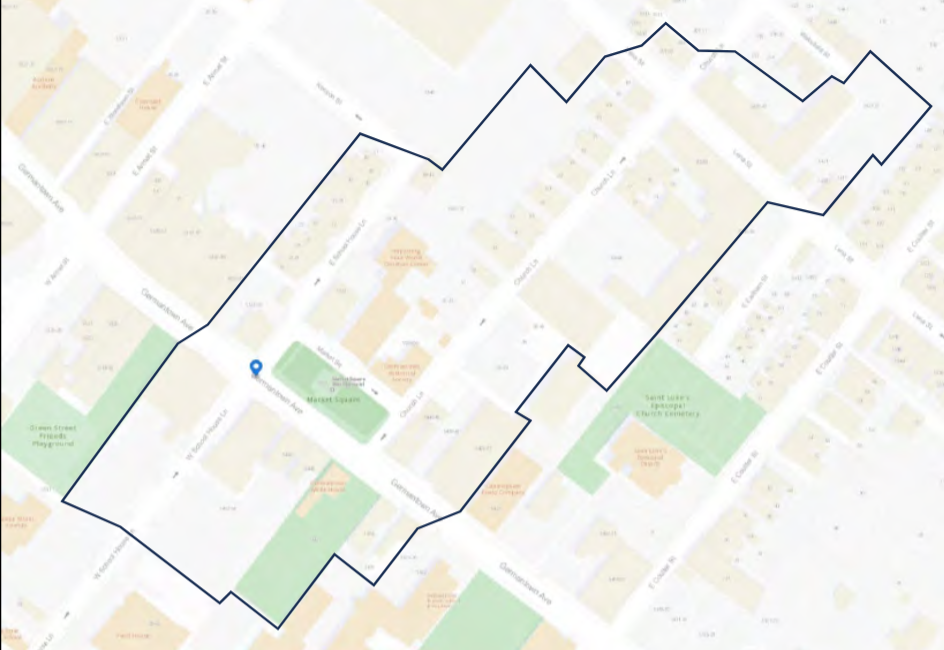
Taken together, the district’s 65 properties represent more than 250 years of neighborhood history — from its colonial roots through its days as an industrial epicenter.
And while the district is much smaller than many historic districts around Philadelphia, backers say designating these buildings is a “no-brainer,” particularly as the neighborhood continues to draw appreciable interest from developers.
“The district really is, despite it only being 65 properties, a microcosm of the history of Germantown,” said historic preservationist Oscar Beisert, the Germantown resident who researched and wrote the nomination for the district.
The Germantown Urban Village District includes properties built before and after the neighborhood, once part of Germantown Township, was incorporated into Philadelphia in the mid-1850s. They illustrate a range of architectural styles popular between the 18th and 20th centuries, including Federal, Georgian and Colonial Revival.
The buildings are situated in and around Market Square, formerly a “crude public space used for marketing, political activity, and gathering by colonists and, later citizens of a new nation,” according to Beisert’s nomination. Directly across the street sits the Deshler-Morris House, where President George Washington stayed in the summers of 1793 and 1794 to escape the Yellow Fever epidemic gripping Philadelphia. British General William Howe used the same home in 1777 during the Battle of Germantown, the only battle fought in Philadelphia during the Revolutionary War.
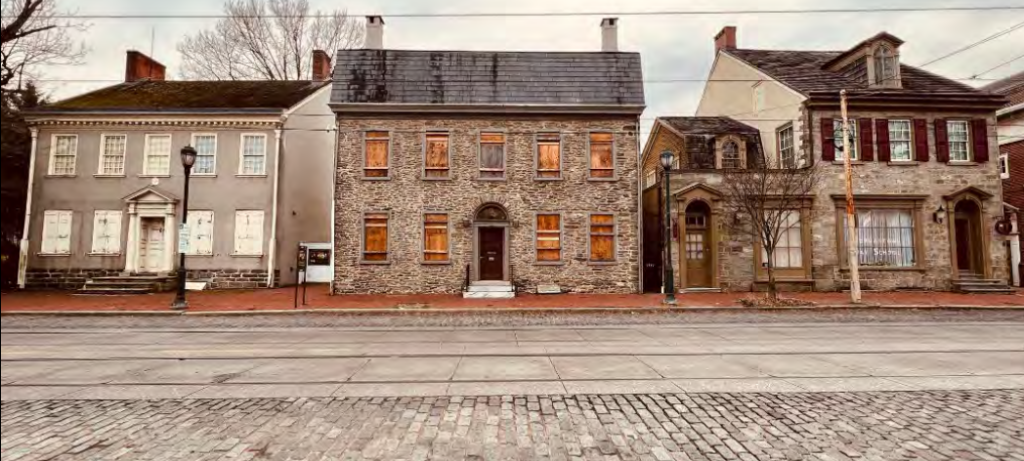
The district also includes several homes owned by prominent Germantown families and mill workers, as well as a Presbyterian church and the former hall for a fraternal organization. The only structure rising higher than three floors is Hamill’s Mill, a converted industrial building once part of Germantown Settlement’s vast real estate portfolio. The city later seized the blighted property, along with dozens of others, from a group of companies tied to Emanuel Freeman, who led the embattled social services agency before it was dissolved following a high-profile bankruptcy case.
The properties are now controlled by the Philadelphia Redevelopment Authority, which plans to put them back into use.
“[The district] tells the story of various waves of settlement and immigration,” said Tuomi Forrest, executive director of Historic Germantown, the partnership organization that enlisted Beisert’s services.
“It tells the story of the evolution of one of the major Colonial-era settlements in the English colonies. It’s the growth in terms of population, in terms of architectural and cultural sophistication, to a major manufacturing epicenter in the country in the 19th century and then the evolution into a market-based economy in the 20th century,” he said.
The district also includes a number of properties that may contain artifacts from Germantown’s Colonial history, the Revolutionary War, and beyond.
No one outright opposed the district’s designation during the historical commission’s meeting on Friday. A number of longtime residents voiced support for it, saying it would help preserve a critical part of the city’s history, and help lay the groundwork for future preservation efforts in the neighborhood.
“This district would be a huge coup for our community,” said homeowner Alex Aberle.

Subscribe to PlanPhilly
WHYY is your source for fact-based, in-depth journalism and information. As a nonprofit organization, we rely on financial support from readers like you. Please give today.




